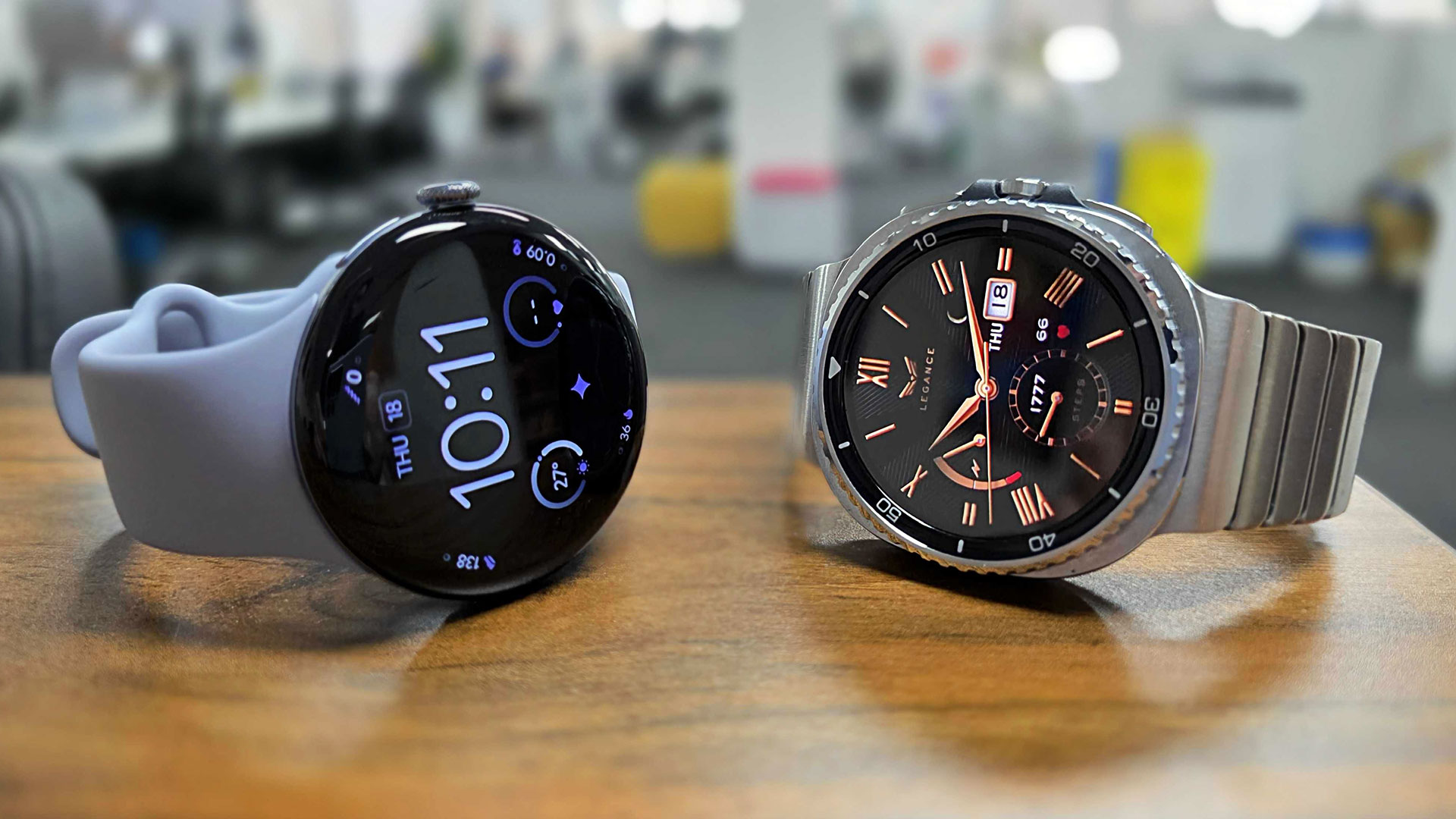Pixel 2 XL vs. LG V30: Android Heavyweights Go Head-to-Head
Google's Pixel 2 XL and LG's V30 both tout 6-inch OLED displays and premium hardware and design. We put them head-to-head to find out which is tops.
Just in time for the holiday season, you've got two new 6-inch Android heavyweights vying for your hard-earned dollars: the Google Pixel 2 XL and the LG V30. From the outset, they appear to be very different devices. The V30 packs double the rear cameras as the Pixel 2 XL as well as a headphone jack, while the Pixel 2 XL offers squeezable sides and the latest in artificial intelligence to better understand the world around you.
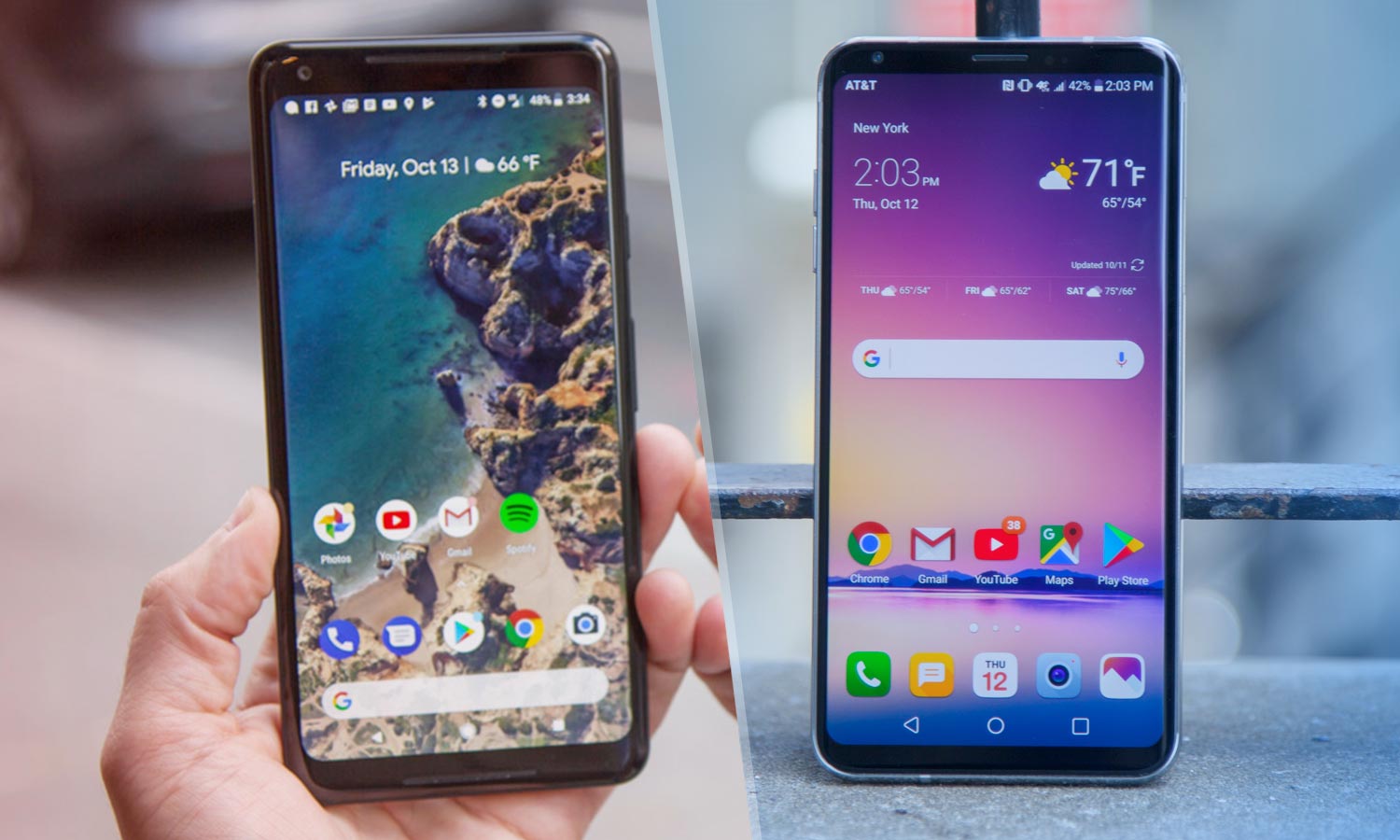
But the deeper you dig, the more similarities you find — right down to the price tag. The V30 starts at $800, while the Pixel 2 XL is a bit more expensive, at $849. Both feature POLED (plastic OLED) displays manufactured by LG, and both are powered by the same processor and have the same amount of RAM.
So which should you go with? That's what we're here to decide.
Specs
| Google Pixel 2 XL | LG V30 | |
| Price | Starts at $849 | Starts at $800 |
| Dimensions | 6.2 x 3 x 0.3 inches | 5.9 x 2.9 x 0.3 inches |
| Weight | 6.2 ounces | 5.7 ounces |
| CPU | Snapdragon 835 | Snapdragon 835 |
| RAM | 4GB | 4GB |
| Storage | 64GB, 128GB | 64GB, 128GB |
| microSD | No | Yes |
| Display | 6 inches (2880 x 1440) POLED | 6 inches (2880 x 1440) POLED |
| Rear camera | 12 MP (f/1.8) | 16-MP (f/1.6) main, 13-MP (f/1.9) wide-angle |
| Front camera | 8 MP | 5 MP |
| Battery | 3,520 mAh | 3,300 mAh |
| Battery Life | 12:09 | 6:29 |
Design
The Pixel 2 XL and the V30 embody 2017 smartphone design: They're slightly curved, water-resistant, full-screen slabs with rounded corners and very little bezel. That said, they still feel different to hold.

The V30 is more compact, as LG has trimmed a bit more real estate above and below the display. It's also lighter and features a glass back, while the Pixel 2 XL uses aluminum. We like the V30's polished metal frame, though its rear-mounted fingerprint sensor/power button is an oddity that needs some getting used to. We also would have preferred a front-facing speaker on the V30, rather than one mounted on the bottom edge.
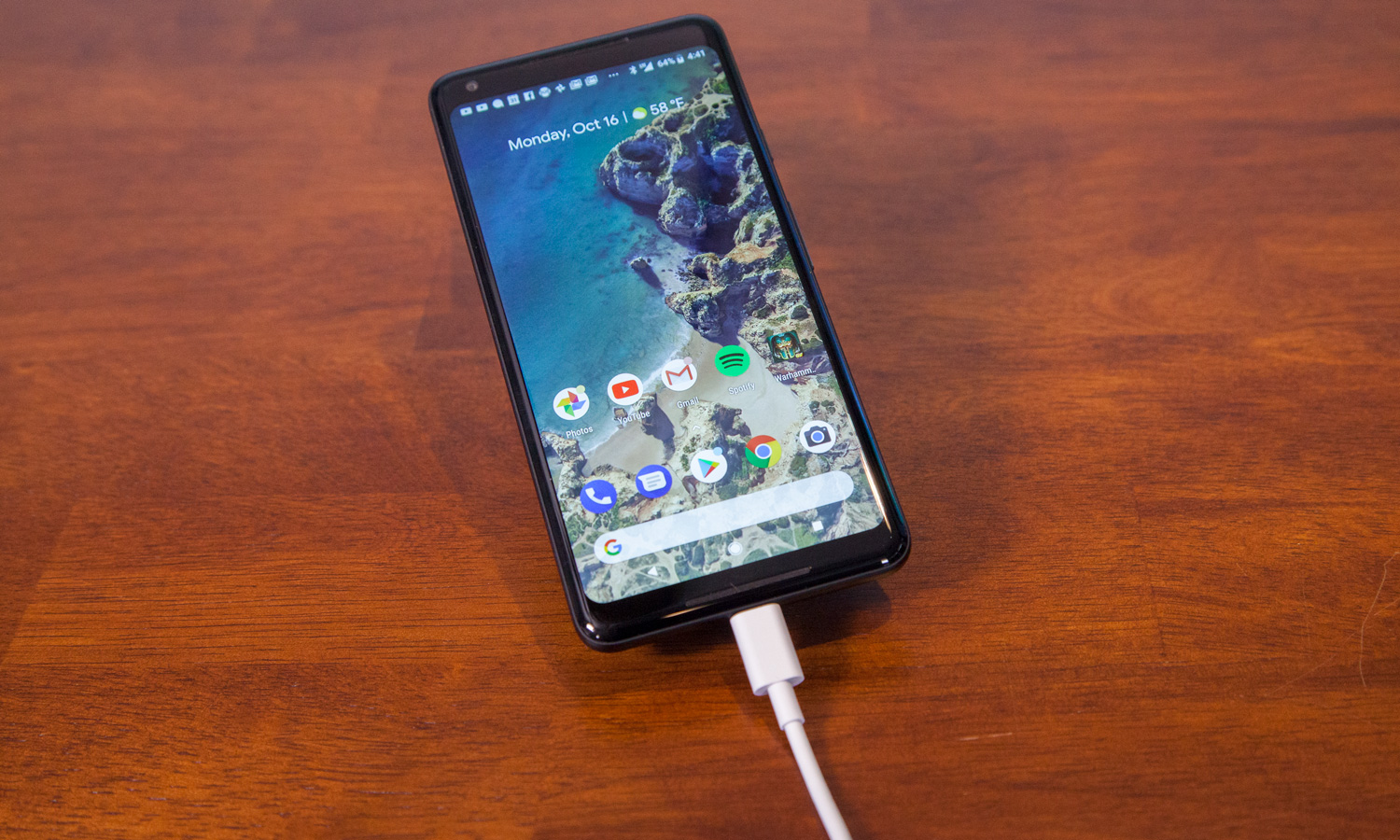
The Pixel 2 XL, by comparison, feels a little chunkier, but also a little more traditional. For starters, its power button is on the right side, exactly where you'd expect. The Pixel 2 XL carries stereo front-facing speakers. And although the textured matte finish on the metal back prevents wireless charging, it feels absolutely exquisite. It's grippy, comes off as much more premium than glass, and simply looks absolutely mean.
MORE: The Best Android Phones You Can Buy Right Now
Get instant access to breaking news, the hottest reviews, great deals and helpful tips.
There's a lot to like about how both of these smartphones are built, so this one ends in a tie.
Winner: Tie
Display
Here's where things get a little interesting. Both the V30 and the Pixel 2 XL feature 6-inch POLED screens with resolutions of 2560 x 1440. Neither of them is perfect, however, and both exhibit their fair share of issues.
Take one look at the Pixel 2 XL's display, and you can tell something is a little off. The colors just don't pop off the surface like you'd expect from an OLED panel. Everything is a little muted, and if you look closely, there's a graininess wherever bright, solid colors are displayed. The white balance is decidedly toward the warmer end of the spectrum, and there are noticeable blue tint issues when you view at off-center angles.
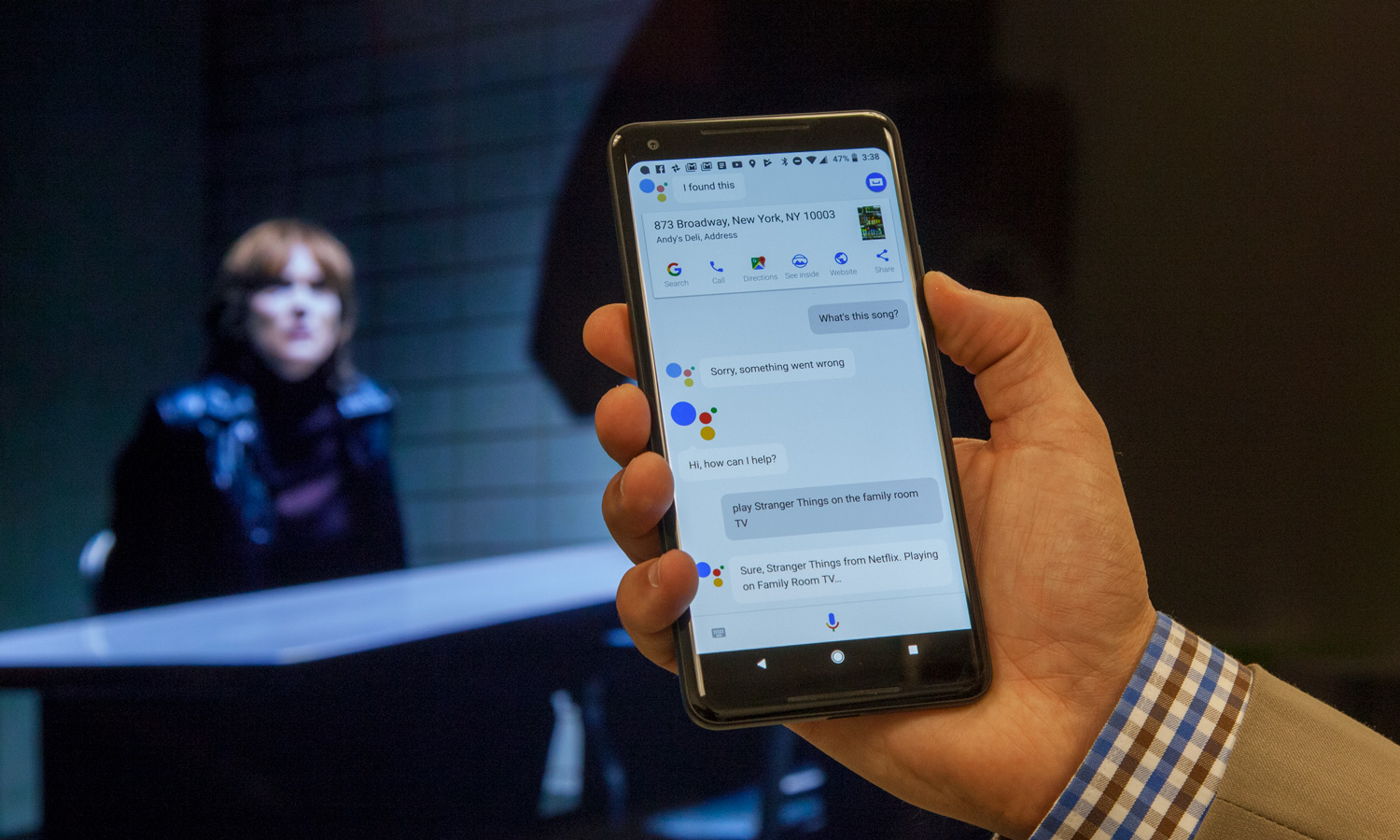
The LG V30 presents a punchier, cleaner picture, but it, too, suffers from poor visibility unless you look at it exactly head-on. In that respect, it's even worse than the Pixel 2 XL.
Truthfully, the less-saturated tones of the Pixel 2 XL's display may not bother you too much, depending on your taste. Google's explanation is that the display has simply been tuned to be "more natural and accurate." While that doesn't account for the screen's other issues, it looks particularly dull only when situated next to competitors such as the iPhone 8 Plus and the Samsung Galaxy S8.
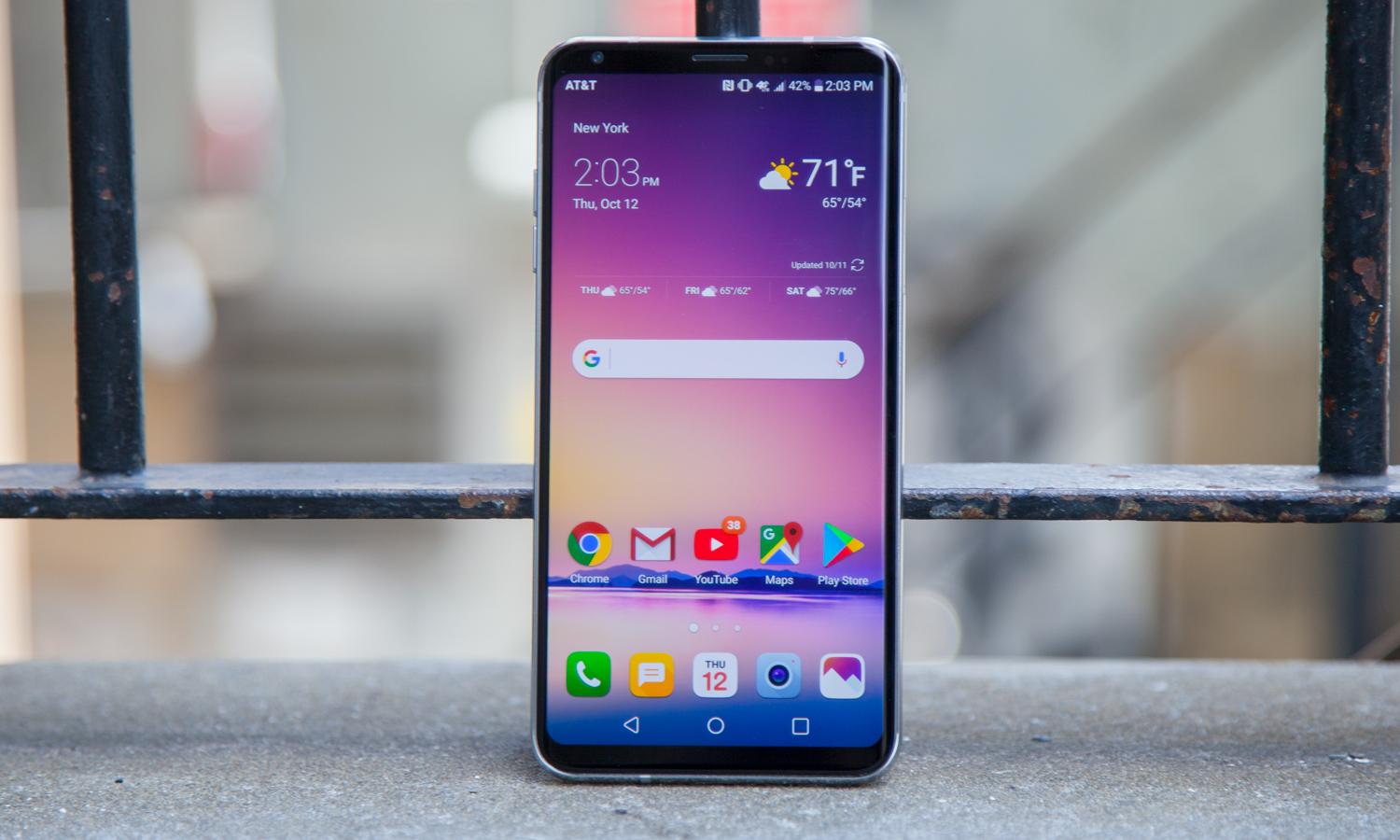
Still, we prefer the V30's more saturated colors and sharper contrast. It shares more in common with the leading smartphone displays, and at the end of the day, it's the one we'd rather be watching videos and thumbing through photos on.
Winner: LG V30
Performance
Inside both the Pixel 2 XL and the V30, you'll find Qualcomm's Snapdragon 835 processor alongside 4GB of RAM. In our testing, similar hardware yielded similar results.
The Pixel 2 XL scored 6,282 on Geekbench 4, which tests overall system performance, while the V30 turned in 6,131. However, the V30 finished on top in 3DMark's Ice Storm Unlimited graphics test, posting a result of 40,260, compared with 38,800 from the Pixel 2 XL.
MORE: iPhone 8 Is World's Fastest Phone (It's Not Even Close)
The Pixel 2 XL demonstrated a slight advantage in video editing. It managed to convert a 2-minute 4K clip to 1080p resolution in 2 minutes and 55 seconds. The V30 lagged behind, with a time of 3:32, though both phones beat the Galaxy S8 Plus, which took 4:07.
None of those differences are vast enough to elicit a noticeable difference in usability. Both devices were smooth and responsive during our testing, and they're neck and neck in terms of performance.
Winner: Tie
Camera
Google caught a bit of flak for neglecting to outfit the Pixel 2 XL with a second lens for its 12-megapixel rear camera. It turned out that the concern was unwarranted. While Google's best device didn't necessarily outclass our favorite camera phone, the iPhone 8 Plus, in every photo op, it still delivered excellent dynamic range, as well as a Portrait Mode that runs through software rather than hardware.
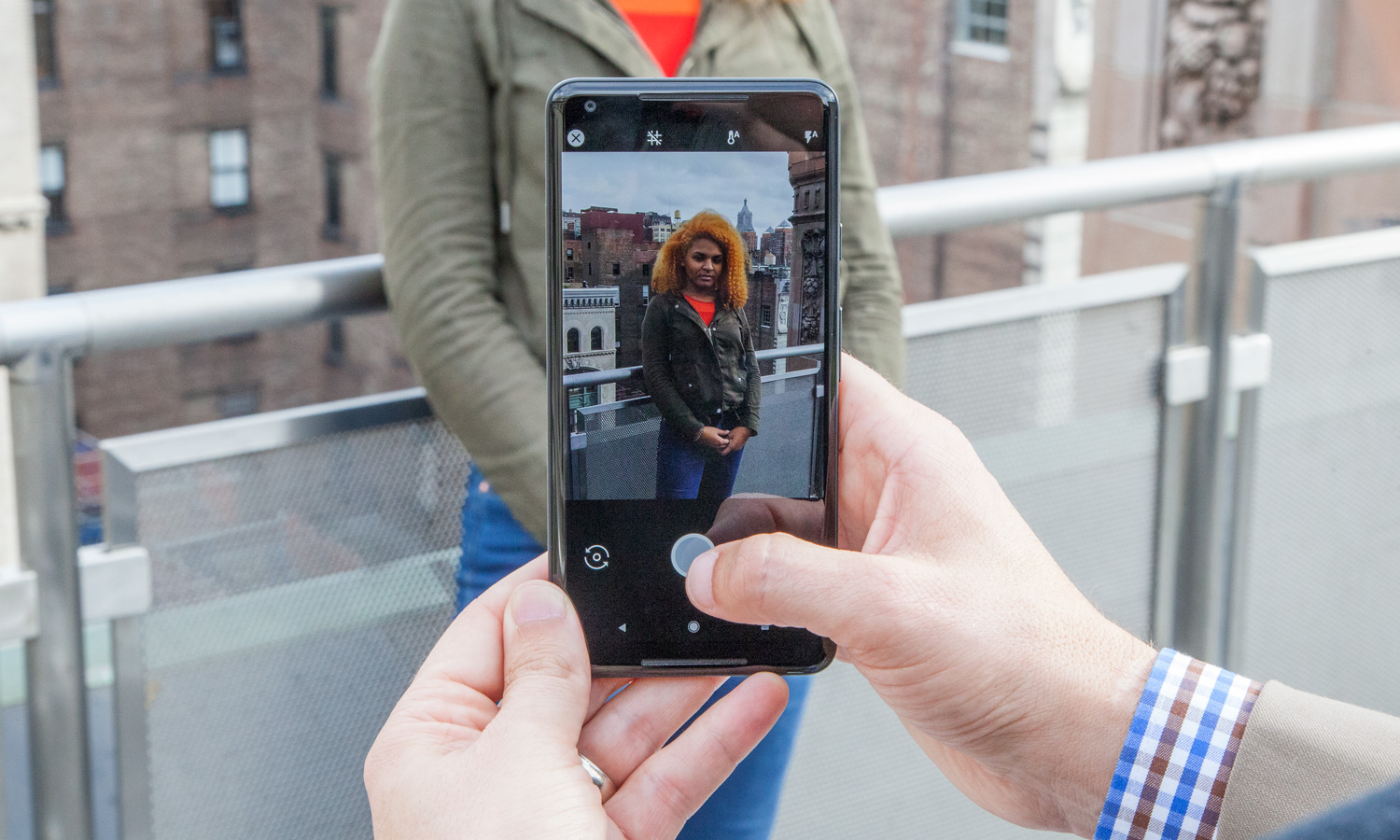
The V30 boasts a 16-MP main shooter with an f/1.6 aperture, paired with a secondary 13-MP sensor that has a 120-degree field of view. It's the largest aperture ever in a phone camera — at least until Huawei's Mate 10 comes along — and it allows the V30 to pick up definition in dimly lit scenes where others can't. Plus, the wide-angle lens is a rarity among high-end handsets.
Both are excellent cameras, so we compared the two on a beautiful fall morning in New York. While the V30 has an abundance of modes you won't find in the Pixel 2 XL's more straightforward app, it was the Pixel that produced more consistently pleasing results, with a crisper exposure and more lifelike hues. In the majority of situations, it's the camera we'd rather have in our pocket.
Winner: Google Pixel 2 XL
Battery
While the Pixel 2 XL lacks the V30's wireless charging capabilities, Google's device easily qualifies as one of the longest-lasting flagships on the market. It outlasted the iPhone 8 Plus, Galaxy S8 and Galaxy Note 8 in our Tom's Guide Battery Test, with a time of 12 hours and 9 minutes.
Much of that has to do with the Pixel 2 XL's generously sized 3,520-mAh battery. The V30's is smaller, but not by much, at 3,300 mAh. Yet surprisingly, LG fared significantly worse in testing.
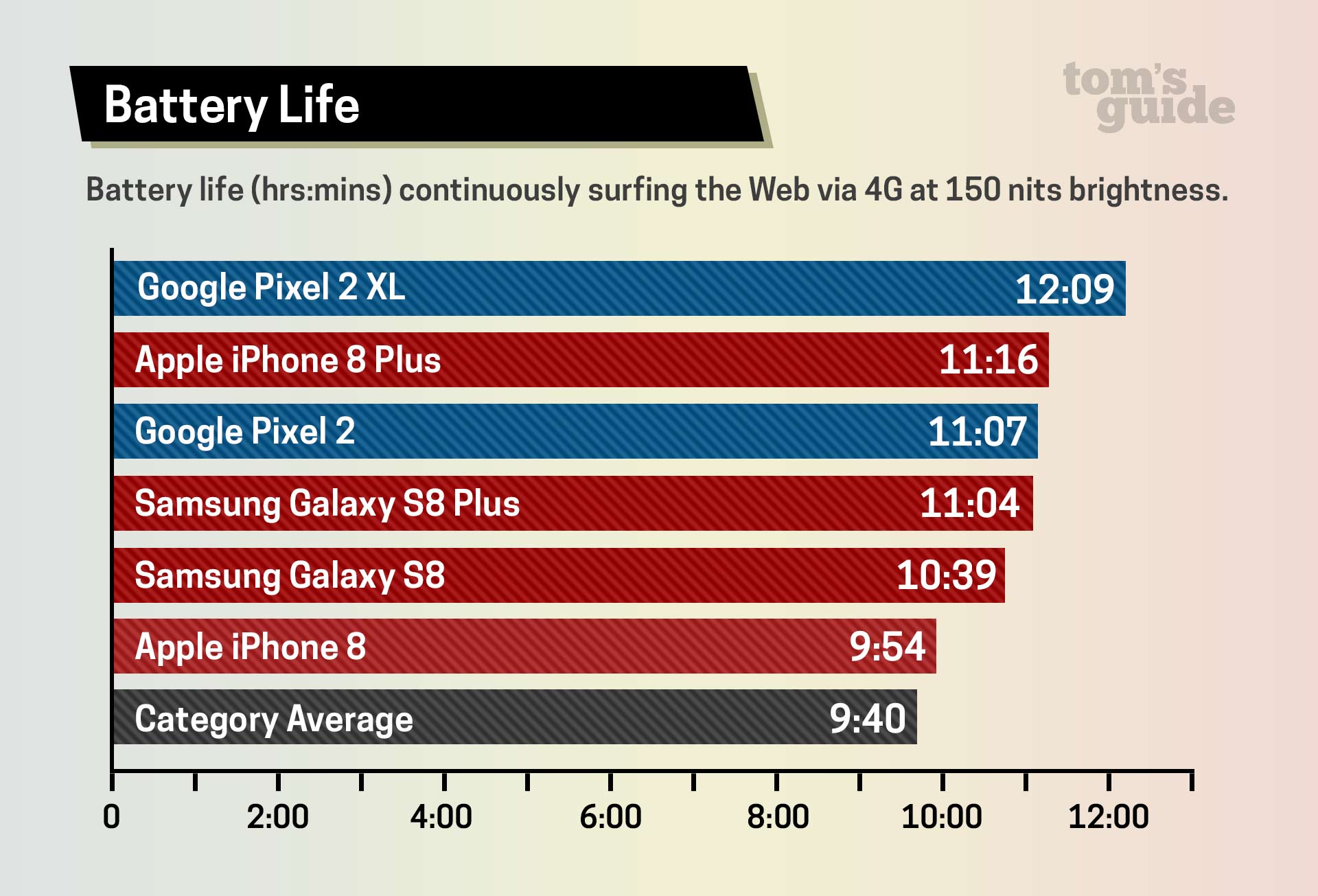
It took only 6 hours and 29 minutes before the V30's battery was spent. That's roughly half what the Pixel 2 XL achieved, and well below the 9:40 smartphone average.
MORE: Smartphones with the Longest Battery Life
Both devices are capable of fast charging. The Pixel 2 XL can replenish 7 hours of battery life in 15 minutes of charging with the included wall adapter, and the V30's Quick Charge 3.0 technology will deliver 80 percent in 35 minutes.
Winner: Google Pixel 2 XL
Special Features
Although Google Assistant has made its way to most new Android phones, the Pixel 2 XL offers a unique way to trigger it: simply by squeezing the sides of the handset. It also features Google Lens, the company's new software that uses your camera to identify people, places and objects, and calls up related actions.
The V30 doesn't include anything like that, but it does tout a variety of video-recording and editing tools. LG has loaded the V30 with Cine Effects, a suite of filters engineered by Hollywood colorists that aims to make your films look theater-ready. There's also Point Zoom, which allows you to zero in on a specific area of the frame besides the center. Experts can even shoot in Log, the video format preferred by those who'd rather colorize their production in programs like Adobe Premiere.
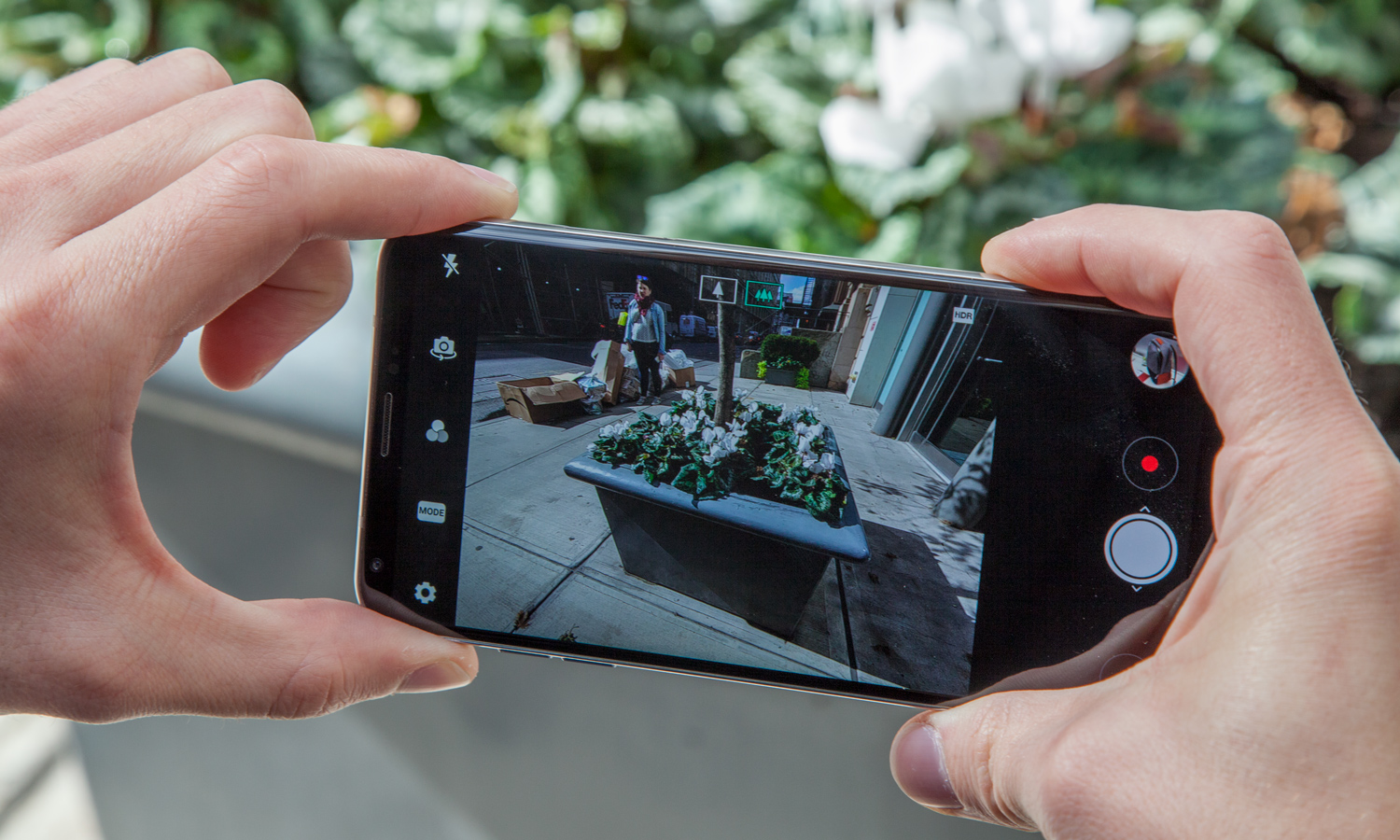
But the V30's other claim to fame that should be more appealing to mainstream users is its excellent audio quality. The V30 has not only a 3.5-millimeter jack but also a digital-to-analog converter that noticeably improves quality when you're listening through headphones. LG has led the way in improving sound in smartphones in recent years, and if music is important to you, you'll want to try it on the V30 yourself.
Winner: LG V30
Value
The Pixel 2 XL starts at $849 for 64GB of storage, and costs $949 for 128GB. Verizon is the only network that carries it, though you can also buy the phone unlocked and take it to the likes of Sprint, AT&T and T-Mobile. There's also Google's Project Fi network, which allows you to pay only for the data you consume.
The LG V30 is a little less expensive, starting at $800 — though pricing differs depending on where you buy it. LG does not yet offer an unlocked version, so you'll have to go to one of the Big Four carriers. T-Mobile is currently the cheapest; AT&T is charging $809, and Verizon is charging $840. Sprint has the V30 Plus, which is exactly the same except it has double the storage, for $912.
MORE: Best Cheap Android Smartphones
While Google's phone is more expensive at launch, you also have more freedom in the networks you can take it to. Conversely, if you're a postpaid customer, chances are, the V30 is already supported by your carrier, so this round ends in a wash.
Winner: Tie
Software
The Pixel 2 XL features the newest release of Android, version 8.0 Oreo, where as the V30 runs 7.1.1 Nougat incorporating LG's interface modifications. The V30's rendition of Android is a pretty stark departure from the stock layout, and it's a little cluttered and not particularly intuitive.

One major advantage on Google's side is the Pixel 2 XL's confirmed three years of software updates. Pixel devices are already the first to receive new versions of Android when they are released, usually many months before companies like LG, Samsung and HTC get around to it. But up until now, Android customers have been given only two years of software support, while their iPhone-toting friends average around four years. Google's move to a three-year cycle is a positive, refreshing change we hope to see more manufacturers follow.
Winner: Google Pixel 2 XL
Overall Winner: Google Pixel 2 XL
| Google Pixel 2 XL | LG V30 | |
| Design | ✓ | ✓ |
| Display | ✓ | |
| Performance | ✓ | ✓ |
| Camera | ✓ | |
| Battery | ✓ | |
| Special Features | ✓ | |
| Value | ✓ | ✓ |
| Software | ✓ | |
| Overall | 6 | 5 |
Google's and LG's latest big-screen smartphones are fantastic in different ways, but overall, the Pixel 2 XL is the better handset. We love its tasteful design, versatile camera, incredibly long-lasting battery and extra year of software support. Google Lens is a powerful addition that will make smartphones even smarter, but the Pixel 2 XL is a sneak peek at that AI-powered future right now.
Credit: Tom's Guide
Adam Ismail is a staff writer at Jalopnik and previously worked on Tom's Guide covering smartphones, car tech and gaming. His love for all things mobile began with the original Motorola Droid; since then he’s owned a variety of Android and iOS-powered handsets, refusing to stay loyal to one platform. His work has also appeared on Digital Trends and GTPlanet. When he’s not fiddling with the latest devices, he’s at an indie pop show, recording a podcast or playing Sega Dreamcast.
-
merritt85 One of the biggest issues, one that Google *itself* made fun of when introduced by Apple, is it's lack of a headphone jack on the Pixel.Reply
Meanwhile, LG has not only kept the headphone jack, they've added a Digital to Analog Converter (DAC) which makes the audio quality noticeable better. Yet you don't mention this item at all, even after big splash that was made when the iPhone dropped it? It's a major win for LG.
Also, the video capabilities in the V30 is better than the Pixel, as is the inclusion of a dual-lens. Yet these are almost footnotes in this review. As far as aesthetics, any way you cut it the Pixel is less attractive than the V30...unless you're someone who likes the pieced-together-modular look.
How much is Google paying to have this review published? -
xnpu Wondering why the V30 battery life would be only half of the Pixel's. With so much of the same or similar hardware, especially the screen, that almost can't be true. A software bug in the V30 perhaps?Reply -
inilzar From what I've seen on video I can't give much credibility to this battery review, half? I don't know about that.Reply -
franco.enea You missed a major issue. Pixel failed miserably on the durability test and LG passed with flying colorsReply -
advameet This is a completely biased review. Looks like the author knows no head or tail of android devices and functioning. Clearly he has portrayed incorrect information on V 30.Reply
In fact the Pixel XL is factually better than its successor in all ways except the processor.
V-30 is a stunning device in a league of its own. It clearly outperforms the Pixel, Pixel 2XL, s8, s8+ and the Note 8 as well . -
ElvenValkyrie DesignReply
I give this to the LG for being a smaller form factor, slightly lighter. Also it has a smaller top bezel. LG has a higher water/dust resistance rating.
As for the back being glass vs metal, most people seem to dislike the toy-like look of the pixel 2's, but the LG back does not look nice to me either (i prefer the all black pixel 2), but LG has a beautiful blue color back that is by far the best color i have seen (but it is not available in the US yet, if ever).
But if you are including the hardware aspects of it, as you mentioned some aspects, then the lack of wireless charging is noteworthy and gives LG the advantage. In addition to that it not only has a headphone jack, but it has a built in high quality DAC for better audio quality. The only hardware advantage the Pixel 2 has is the front facing speakers.
Another aspect was the power button, it was brought to my attention on a reddit forum that having the fingerprint sensor also be the power button allows for you to quickly lock your phone without having to reposition your hand. With the software aspect of double tap to wake/sleep I have found it better than having a separate power button. This along with the chunkier phone "feeling more traditional" is understandably a decision factor, but relearning habits to get a more efficient experience does appeal to many people.
V30 wins.
Display
The displays are the same screens made by LG on the Pixel 2 XL and V30. The differences in saturation seem to be caused by software settings rather than physical display issues. That being said I do prefer the LG display.
V30 wins.
Performance
I have no experience with these benchmarks.
Tie.
Camera
For the camera, I have read that most people prefer the Pixel 2 quality. To me color saturation seems lower, which I prefer in most situations. The front camera is 8 MP on the Pixel 2 compared to 5 MP on the V30. The rear camera is 12 MP on the Pixel 2, 16 MP + 13 MP on the V30. Pixel 2 only has one rear camera, opting for software to create the effect of depth in photos.
Pixel 2 wins on the front camera, based on preference for the rear camera.
I will give this to the Pixel 2.
Battery
I don't know how you got such a low battery time on the LG, in my use with it the battery lasted all day with constant usage, always on display, and no power saving features enabled. It has averaged at least 10 hours of standard web searching, browsing reddit, and occasional youtube videos. With daily usage I only charge it after a bit more than 24 hours (Having to sleep and not utilizing the phone for about 8 hours). Are you sure the brightness settings were correct? That's seems way too low unless you did not test a retail ready model. Online, most people are praising the long battery life of both of these phones.
I will say that the pixel 2 has PD 2.0 charging at 18W so it should charge faster than the V30 (which was supposed to support PD charging, but likely at a lower speed). But the way you presented the charging speeds did not allow for easy comparison, the spec the V30 uses is QC 3.0 which charges to 50% in 35 minutes, and Pixel uses PD 2.0 which charges to 50% in 30 minutes.
Pixel 2 wins.
Special Features
Google releases all of their new features to their Pixel line first before all other androids as well as quick OS updates. Google Lens beta, what's playing, bluetooth devices show battery percentage (previous LG phones had this, but I'm not sure if the V30 has it.
LG offers a lot of features in hardware and software: Headphone jack with built in DAC, Dual camera on rear for wide angle pictures, customization features for audio, video, and picture media on device. Floating bar that adapts to certain apps, similar to the floating google pill but with more functionality and potential.
Google is going for the minimalist UI.
This is also a preference based win. Pixel for software features, V30 for hardware features. That said considering how customizable Android OS is, replicating certain features on the Pixel 2 can be as easy as downloading an app and clicking install. And many features are on the Pixel 2 before any other android, but it is highly likely the features will get added to the next Android OS release, Oreo, so Pixel 2 is kind of like a beta testers best phone.
That said I give the overall win to the V30 for hardware as well as software special features.
V30 wins.
Value
With the V30 you get more hardware capability, with Pixel 2 you get faster software updates. Both are major factors to the phones. The price difference does not matter as much as the features you get, so this is a tie.
Tie.
Software
The pixel 2 guaranteed updates is one of the best software features offered. Yes, the launcher on V30 is not pretty, but you ignored the LG specific software for the audio, video, and picture settings. There are many different modes and options that you can use on the V30, it also saves raw versions of each so that you can have more control over editing all your media.
In addition to that, many of the Pixel 2 specific features are part of the Android O release, so they will be coming to the V30 as well. If you are going for pure stock no customization then yes, the Pixel 2 is the best one, closest to the Apple experience of simple and functional-enough.
For good measure I will give this win to the Pixel 2.
Overall
V30: 5
Pixel 2: 5
It is best to choose on your individual preferences. In general: Software = Pixel 2, Hardware = V30 -
flavionoschese It doesn't matter which is the best.Reply
No duo cam (I miss my HTC One M8)
No headphone Jack
No wireless charge
No sd card
Well,
I w1ll never buy this Pixel! -
steve841 I have a V30 - the battery life is excellent. So, while Im sure the 2 XL lasts longer, this one is not the 6hr life claimed by the test. That I assure you.Reply
